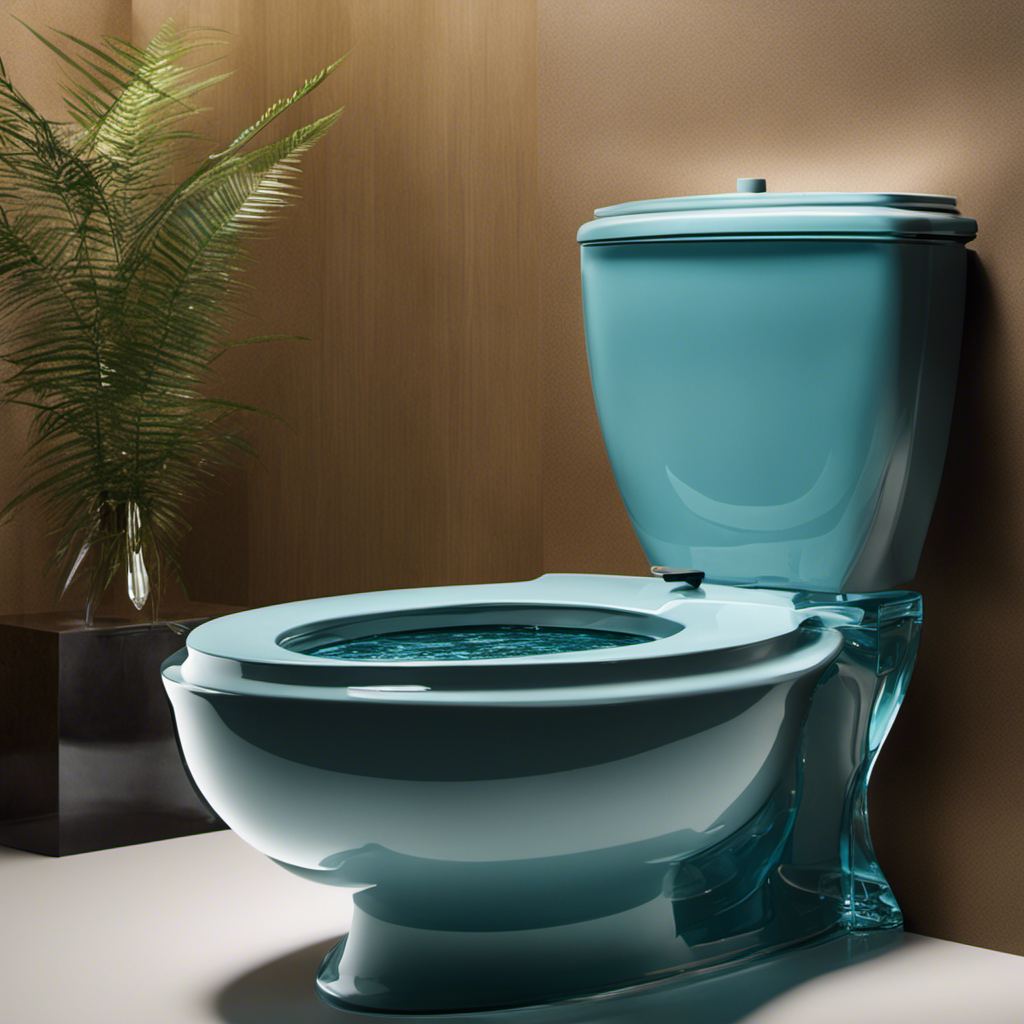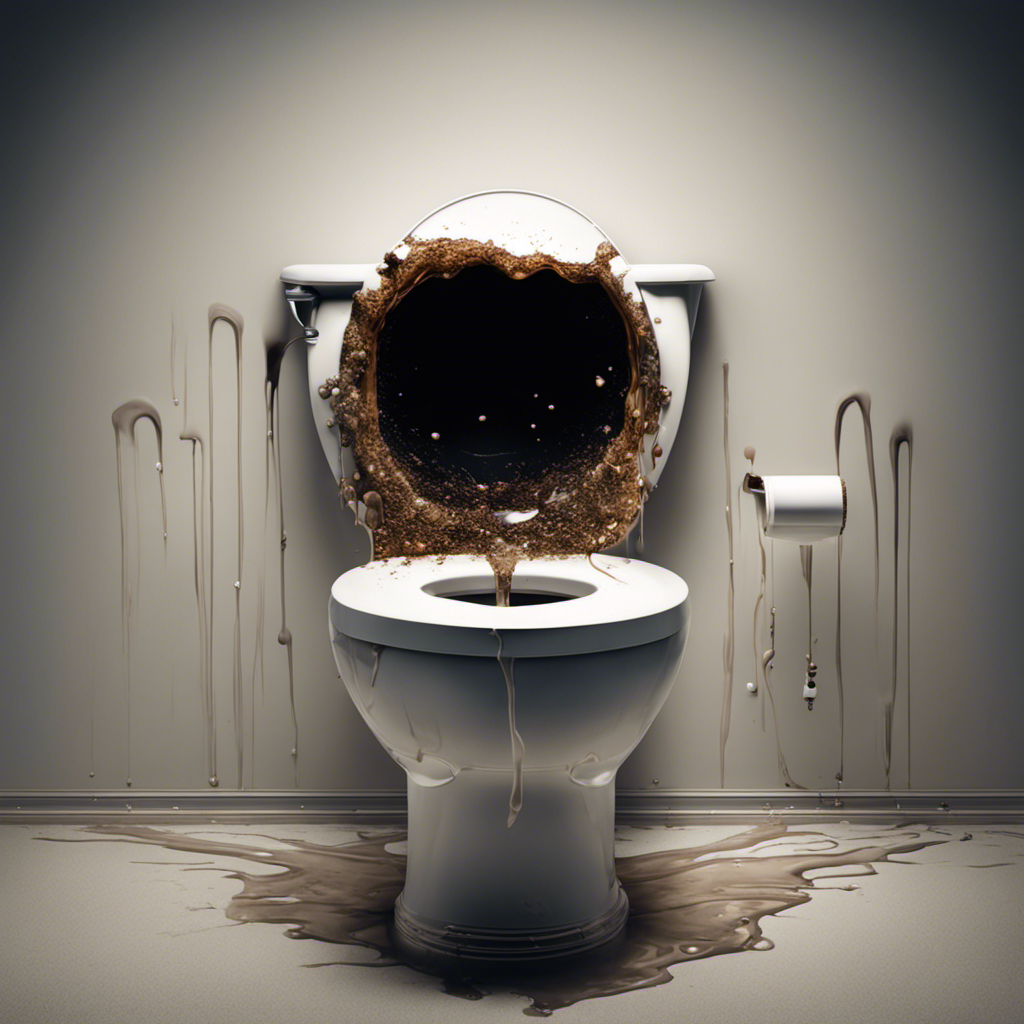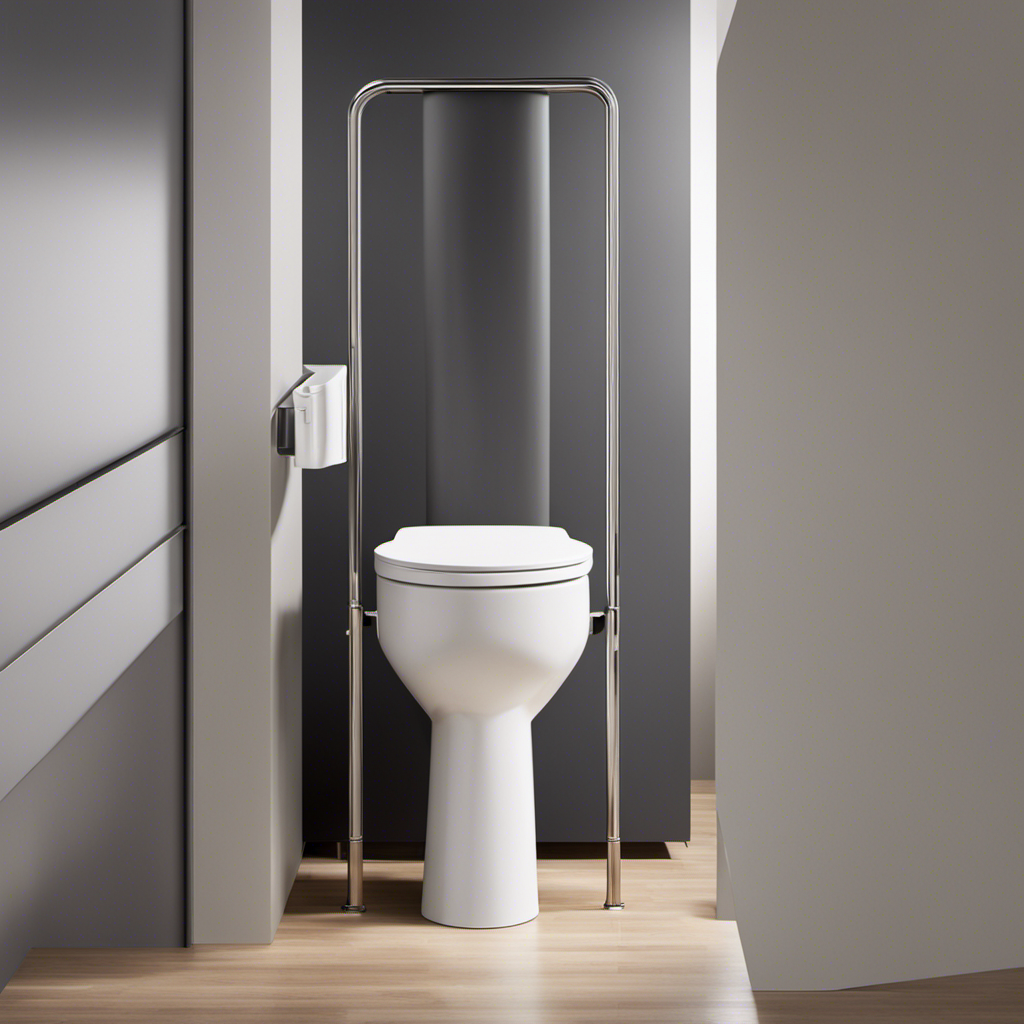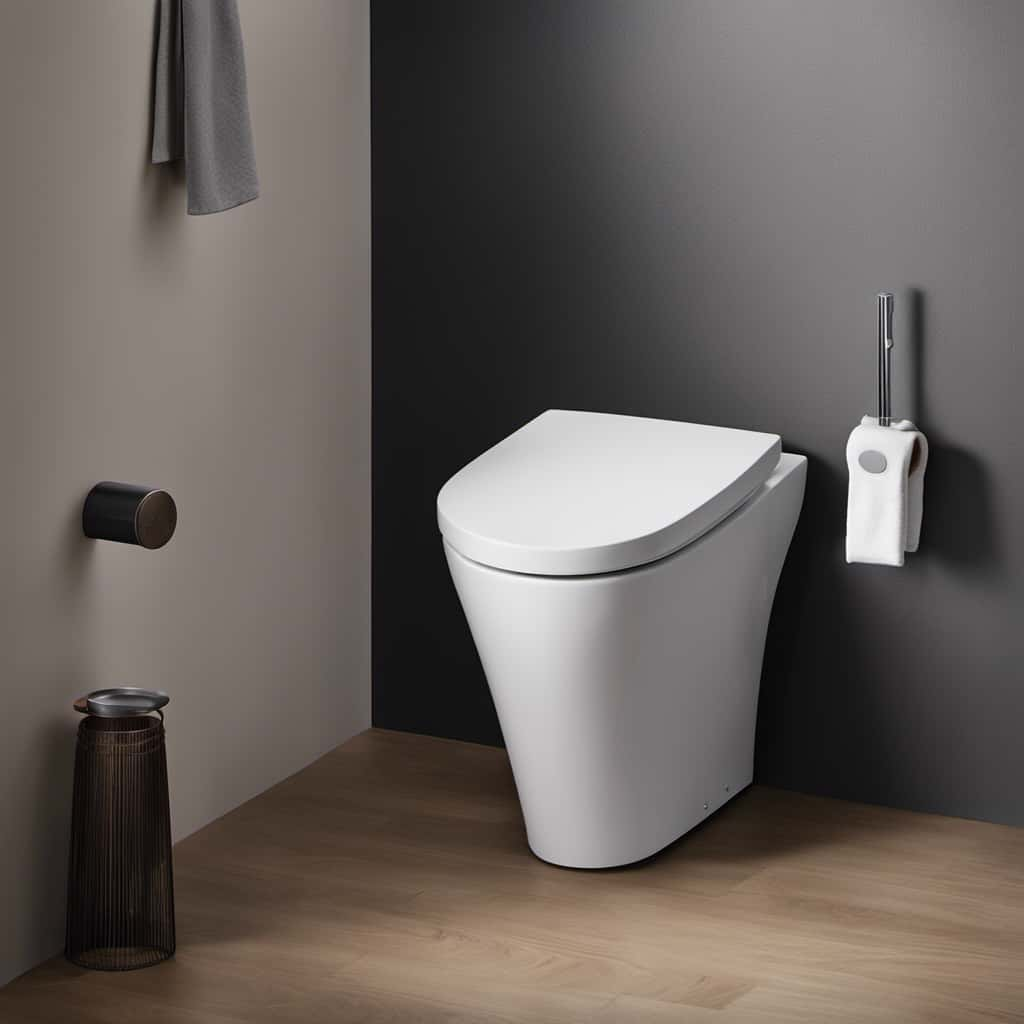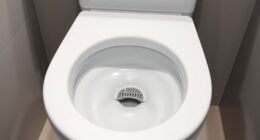Ever wondered why your toilet flushes at a snail’s pace? Well, strap in because I’m about to take you on a wild ride through the world of slow toilet flushes.
In this article, I’ll be diving deep into the common causes, how to identify a partial flush, and the role water pressure plays in all of this.
We’ll even explore steps to improve your toilet’s speed and signs that it might be time for a repair.
So, let’s get ready to flush out all the details!
Key Takeaways
- Clogged or partially blocked pipes are common causes of slow toilet flushes.
- Regular maintenance and use of enzymatic cleaners can help prevent clogging.
- Water pressure affects toilet flush efficiency, and proper pressure is necessary for a strong flush.
- Checking and repairing the flush mechanism, including the flapper valve, chain, and flush handle, can address slow flush issues.
Common Causes of Slow Toilet Flushes
One common cause of slow toilet flushes is when you have a clogged or partially blocked pipe. When debris, such as toilet paper or foreign objects, accumulates in the pipe, it restricts the flow of water and affects the flushing process.
To address this issue, there are potential solutions for a slow toilet flush. One option is to use a plunger to dislodge the blockage and restore proper water flow. Another solution is to use a drain snake or auger to remove the obstruction.
Additionally, regular maintenance, such as using enzymatic cleaners or performing a thorough pipe cleaning, can help prevent clogging and maintain optimal flush speed.
It is important to note that the design of the toilet also plays a significant role in flush speed. Factors such as bowl shape, water volume, and flush valve size can impact the efficiency and effectiveness of the flush.
How to Identify a Partial Toilet Flush
Identifying a partial flush is easy – you just need to pay attention to the amount of water in the bowl. When you flush the toilet, a proper flush should result in a significant amount of water swirling around and quickly draining from the bowl. However, in the case of a partial flush, only a small amount of water will be present, and it may not drain as efficiently as it should. This can be a sign of a problem with your toilet’s flushing mechanism.
To troubleshoot this issue, you can start by checking the water level in the tank. Ensure that the water level is at the recommended mark, as a low water level can cause a weak flush. Additionally, you can inspect the flapper valve, the chain connecting it to the flush handle, and the flush handle itself. If any of these components are damaged or misaligned, they may need to be repaired or replaced.
Understanding the Role of Water Pressure in Toilet Flushes
To understand the role of water pressure in your toilet flush, you should check the water supply valve and ensure it is fully open. Water pressure plays a crucial role in the efficient functioning of your toilet. If the water pressure is too low, it can result in slow flushes and incomplete waste removal. Troubleshooting slow flushes requires understanding the effects of water pressure on your toilet’s performance.
Here are three important effects of water pressure on toilet flushes:
-
Increased water pressure leads to a stronger flush, effectively clearing the bowl.
-
Insufficient water pressure can cause the waste to accumulate in the drainage system, resulting in clogs.
-
Proper water pressure ensures the efficient operation of the flushing mechanism, preventing leaks and other issues.
Understanding these effects will help you diagnose the cause of slow flushes and take appropriate steps to improve the speed of your toilet flush.
Steps to Improve the Speed of Your Toilet Flush
Improving the speed of your toilet flush can be achieved by adjusting the water pressure. Proper toilet flush maintenance is essential to ensure efficient flushing and prevent any issues with slow flushes. Troubleshooting toilet flush speed begins with checking the water supply valve, which controls the water pressure. Ensure that the valve is fully open to allow maximum water flow.
Another common cause of slow flushes is a clogged toilet drain. Use a plunger or a toilet auger to clear any obstructions in the drain pipe. Additionally, check the flush valve and flapper for any damage or debris that may impede the flushing process.
By addressing these maintenance tasks, you can improve the speed of your toilet flush and prevent any potential problems.
Now, let’s explore the signs that your toilet flush mechanism needs repair.
Signs That Your Toilet Flush Mechanism Needs Repair
If you notice water continuously running or a weak water flow after flushing, it may be a sign that your toilet flush mechanism needs repair. A malfunctioning toilet flush handle can cause water to continuously flow into the toilet bowl, leading to wasted water and higher water bills.
Additionally, a faulty flush mechanism can result in a weak water flow during flushing, making it difficult to properly dispose of waste. To determine if your toilet flush mechanism needs repair, check the water level in the toilet tank. If the water level is too low, it could indicate a problem with the flush mechanism.
Common issues include a worn-out flapper valve, a broken chain, or a misaligned flush handle. These problems can be resolved by replacing the faulty components or adjusting the flush handle mechanism.
Frequently Asked Questions
What Is the Average Amount of Water Used in a Toilet Flush?
On average, a toilet flush uses around 1.6 gallons of water. However, due to water-saving regulations, newer toilets may use as little as 1.28 gallons per flush. These regulations aim to reduce water consumption and promote environmental sustainability.
Can a Slow Toilet Flush Be Fixed Without Calling a Plumber?
Certainly! To fix a slow toilet flush without calling a plumber, start with DIY troubleshooting. Check the water level, inspect the flapper, and clean the jets. Simple maintenance can often resolve the issue and restore proper flushing efficiency.
Are Slow Toilet Flushes More Common in Older Homes?
Slow toilet flushes can be more common in older homes due to aging plumbing systems. This is just one of the many common toilet problems that can arise in older homes, requiring attention and potential repairs.
Is It Possible for a Clogged Drain to Cause a Slow Toilet Flush?
Yes, a clogged drain can definitely cause a slow toilet flush. When the drain is clogged, it restricts the flow of water, resulting in a weaker flush. It’s important to address the clog to restore proper toilet plumbing.
Can Using Low-Flow Toilets Contribute to Slower Flushes?
Using low-flow toilets can contribute to slower flushes due to their reduced water usage. The efficiency of these toilets may be impacted by low water pressure, affecting the speed at which the flush occurs.
Conclusion
After learning about the common causes of slow toilet flushes and understanding the role of water pressure, I now have the tools to improve the speed of my toilet flush.
By following the steps provided, I can ensure a swift and efficient flush, saving me time and frustration. It’s like giving my toilet a much-needed boost, allowing it to perform at its best.
Remember, paying attention to signs of a malfunctioning toilet flush mechanism is crucial to maintaining a smoothly functioning bathroom.
So let’s keep those flushes flowing!
